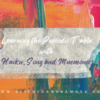Yes, there’s a right way to read books to kids

Reading to children is always considered as a great activity to do with kids and is considered a symbol of good parenting. From generations, we have been doing this with the belief that it will help our kids become stronger with respect to developing language skills, but then research has something else to say.
The paper published under the title “Unlocking the door: Is parents’ reading to children the key to early literacy development?” says that parents in the process of reading out to kids fail to draw the child’s attention to features of the print. This is mostly true if we look back at the way we read out stories. We always try to read out the story by pointing out the illustrations and not the print. As a result, shared book reading often does not advance children’s early literacy development.
As parents, we are not using the shared storytime to teach our kids letter names, letter sounds, numbers, color words, similarities in words, word reading, repeated readings of literary sentences, discussion of word meanings during reading, elaboration of possible points, questioning of key incidents, and reading strategies.
So how should we be reading out to kids
Well, though we know that reading supports oral language and nonlanguage development, “Being read to is just not enough”. If at homes we do passive reading though they will develop strong oral language, they may have difficulty acquiring literacy and may not develop knowledge of written registers. Rather, it is important for parents to spell out letters, make their sounds, spell the child’s name, name the shapes, name numerals, and teach their children songs and nursery rhymes.
Here are some tips we adults must keep in mind while reading out books
1. Point to the word as you read aloud
2. Words on a page have meaning, explain that as you readout
3. Always go from left to right
4. Words on a page are made up of letters. Spell out words so kids get hang of letters too
5. Develop an awareness of the alphabetic structure of print, phonemic awareness, and letter-sound associations
The cardinal rule
This does not mean that you pick up the book and start spelling words and letters. Before moving to this stage, read through the book without interruption at least two or three times, so students can fully savor the beauty, the patterns, and the meaning of the story.








